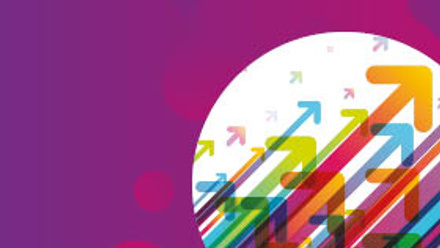Five ways in which technology can support reward across a diverse workplace

While there’s no doubt that a workforce which has an increasing proportion of older employees will bring plenty of new challenges, I believe that employers are in a good position to help address concerns of ageing employees and retain the most talented people.
One reason for this confidence is the progress we have made to make UK workplaces more diverse. Yes, there is always room for improvement, but accommodating people of diverse backgrounds is the norm in business today - not the exception.
The main cause for optimism however, is the explosion of innovation in HR technology. In recent years it’s given us all the tools we need to overcome any challenges we might face in engaging and supporting this increasingly multi-generational workforce. But, how will this work in practice?
War for talent
With fewer younger people entering the workforce at the start of their careers and a future squeeze on migrant workers, one of the biggest challenges that employers face will be attracting the best people for their business.
Technology will be key to winning this battle. It won’t just be a case of deploying benefits platforms which allow different people at different stages of their working life to choose the most relevant benefits – that should be a given. With the range of data and insight available, HR can help reveal what people value and want. Using the data will help refresh the benefits strategy so that it remains competitive.
Plug and play
In the past, one of the biggest barriers for any employer wanting to update their benefits package was the time and hassle involved in bringing a new provider on board.
Technology will support the reward proposition for a multi-generational workforce by reducing the number of headaches involved with introducing new propositions into the mix.
With the recent influx of ‘plug and play’ solutions from the new generation of HR tech companies, businesses will not only need fewer resources to manage their changing benefits portfolio but will also be able to make changes more quickly and efficiently.
Innovative benefits
A recent report from the Institute for Employment Studies (2019: A Totally Rewarding Year) criticises employers for failing to provide what employees really value from a reward package rather than what they are offered.
So what do employees want? Regardless of their age group, research points to three main areas: support for health, financial wellbeing and personal development or training.
Again, technology is allowing employers to offer new kinds of support in each of these areas at little or no cost. One good example of this is Hatch, a financial planning tool which uses AI to deliver personalised savings and investment plans for employees.
Technology can also allow employers to offer better support for employee health in the workplace through virtual GPs, provided by the likes of Babylon Health. The cost of providing access to these services can be offset by the disruption of employees taking time off for health issues and the savings made by spotting health conditions early on.
Reinforcing culture
Perhaps the biggest challenge in the ‘workforce of the future’ is that of culture - ensuring employees with different approaches to communication and behaviour respect each other and work together effectively.
It‘s here that recognition has a critical role to play. Putting in place a framework which clarifies and celebrates the behaviours that matter most to the business is one of the more powerful ways that organisations can build a coherent culture.
By using recognition platforms that allow managers, individuals and teams to bring recognition out into the open, employers can ensure that recognition is used consistently and successfully.
For many organisations, putting in place the tools and processes to make this happen is one of the biggest opportunities they have to improve employee engagement and performance.
The author is Andy Philpott, sales and marketing director at Edenred UK.
This article is provided by Edenred.
In partnership with Edenred
We help you build stronger connections with your employees to drive higher engagement&performance.







